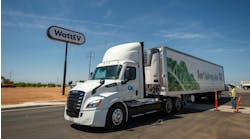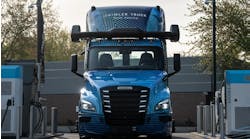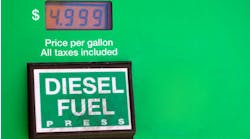Daimler Trucks North America (DTNA), which builds Freightliner, Sterling and Western Star trucks, sought to dispel what it regards as misinformation about SCR that it believes is confusing North American fleet owners. “We will be utilizing Daimler's BlueTec technology for our Detroit Diesel engines beginning in 2010,” said Chris Patterson, president and CEO of DTNA.
“Given U.S. driving conditions characterized by steady cruising speeds on the highways and enormous overland distances, the new BlueTec system will show its advantages early on,” said Mike Delaney, DTNA senior vp of marketing. “The BlueTec system with SCR technology is projected to increase fuel efficiency by about 3 to 5%.”
Reaffirming DTNA's commitment to the emissions technology, Delaney declared that the company is committed to “dispelling the SCR misinformation being tossed about and to talk about what we know works and is in fact working today in trucks worldwide.” He noted that automotive-grade urea, also known as diesel exhaust fluid (DEF) or, in Europe, AdBlue, is nontoxic, not harmful to the environment, and poses no real hazards when used properly.
Delaney said the operating range for the urea used by an SCR system with a 20-gal. tank should require refilling only about every 5,000 to 6,000 miles under typical highway duty cycles. He added that in Europe, where more than 500,000 heavy-duty trucks with SCR are on the road, freezing of urea “has not been a problem” because urea won't freeze until temperatures drop to 12 deg. F; even once frozen, urea thaws very quickly from the warmth of the engine, tank and supply system.
He went on to address arguably the biggest concern many fleets have about urea — availability. “The DEF manufacturers, the distributors that supply liquids to thousands of truckstops and dealerships today, the packaging companies that do this in their sleep, and the truckstops that absolutely understand how to dispense fluid to truckers all say this is pretty vanilla,” declared Delaney.
“Add the truck dealers, diesel distributors, and service points of the other OEMs committed to SCR, and there will be over 1,700 points of supply going in,” he stated. “With a range of 5,000 to 6,000 miles — or nearly twice the width of the whole country — one would have to work pretty hard to run out of DEF.”


